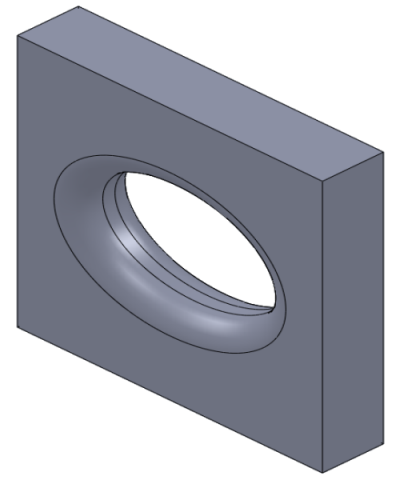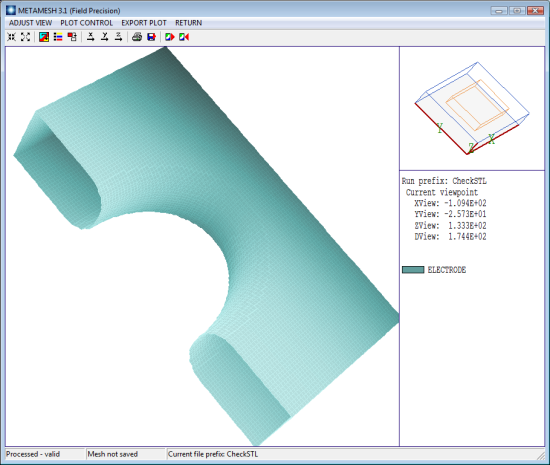We've made a considerable effort to support the import of solid objects as STL files from SolidWorks and other CAD programs into MetaMesh. After several iterations and refinements, the procedure is highly reliable and relatively easy. We've received very good comments from users. I have to confess that I have been reluctant to use STL parts in my consulting work for two reasons:
- Setups are quicker when I can get away with native MetaMesh solid models.
- SolidWorks has so many capabilities that it may be daunting to a casual user.
In a recent consulting job, I realized that it would be foolish not to use SolidWorks. I was studying the application of electrostatic lenses with elliptical apertures to transform a circular electron beam into a high-aspect-ratio sheet beam (Figure 1). I could have used MetaMesh solids to build a plate with an elliptical hole. The problem is that electric field stress was a critical concern. Adding a fillet to the elliptical hole would have been impossible with simple solids. On the other hand, the task is relatively easy in SolidWorks.

Figure 1. Central electrode of an einzel lens with an elliptical aperture.
I went through several of the SolidWorks tutorials a year ago, but much of that knowledge had evaporated. To get back into things, I set modest but useful goals:
- Review how to set working dimensions (in this case, millimeters).
- Create a single part centered at coordinates (0.0,0.0,0.0). As a result, the part would be centered in the MetaMesh workbench frame when it is loaded, and I could use the SHIFT command to move around searching for the optimal position.
- Review Solidworks settings for STL export and check the conversion process to MetaMesh.
- Confirm how to modify a template part to represent a set of lenses with different ellipse aspect ratios.
Based on my experience, I wrote a step-by-step tutorial. Here's a link to download it: solidworks.pdf. The document would be of interest to potential users of MetaMesh and to casual users of SolidWorks. I expect to be rereading it the next time I'm building a simulation with complex parts.

Figure 2. Cutaway view of the electrode represented as a conformal hexahedron mesh.
LINKS